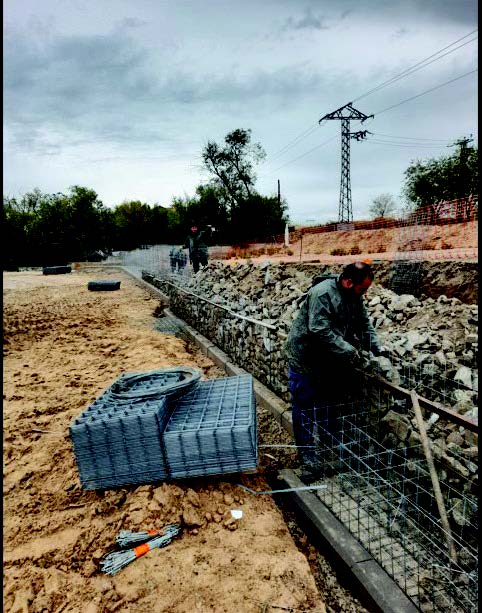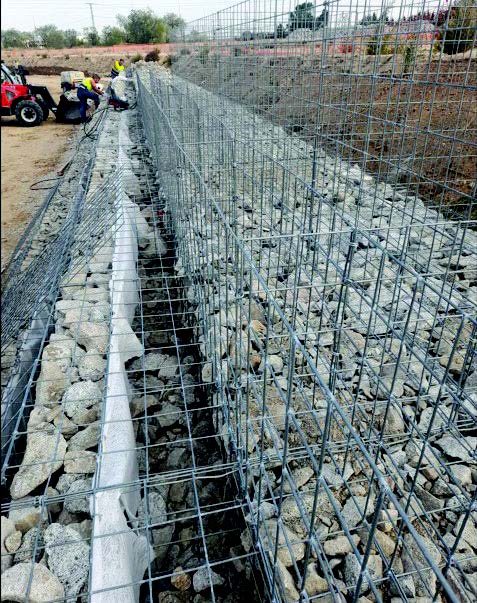Use of waste as materials – Metropolitan Woodland
Description of the Environmental Measure
Problem detected:
These works cover the interventions considered by Madrid City Council under its "Island of Colour2 strategy.” This strategy has three action areas:
- Metropolitan Woodland – Plots of land larger than one hectare in size where it is intended to implement woodland with native species in the future.
- Renaturing – Plots smaller than one hectare in size intended for public use, improving them in landscaping and functional terms.
- Productive Neighbourhoods – Adapting local residents' allotments with sufficient infrastructure to generate business activity.
The works units planned include earthworks, gabion walls, gravel or cobbled paths, sustainable drains and fencing or planting and irrigation. The works will therefore have to address the need to obtain large volumes of stones to build the gabion walls with mesh for dividing/retaining walls.
Solutions adopted:
Being aware of the stone waste that being generated at another site, the El Endrinal WWTP in Collado Villalba, the company decided to value this waste. The problem of needing large volumes of stones for the Metropolitan Woodland site could therefore be solved, while also allowing the waste produced at another site to be revalued.
In order to carry this out a preliminary notification as a valuer of materials on another site was given to the Madrid Regional Government in order to begin the transport and valuation.
Results:
The Metropolitan Woodland Project has enable several key types of environmental impact to be effectively addressed.
First, the extraction of natural resources has been reduced by reusing the surplus granite from the El Endrinal WWTP site. This not only relieves the pressure on natural resources, but it also avoids further degradation of the natural environment by reducing the need to exploit new quarries or extraction areas. The valuation of stones from other sites also contributes towards responsible waste management. This results in a reduction in the amount of waste that ends up at landfills.
This project, besides assuring the use of inert waste, favours and protects the conservation of native species.










